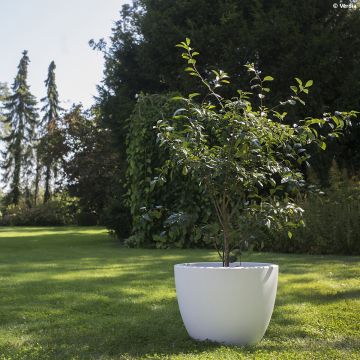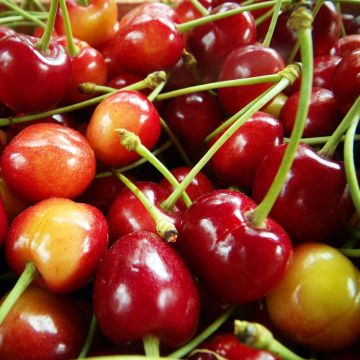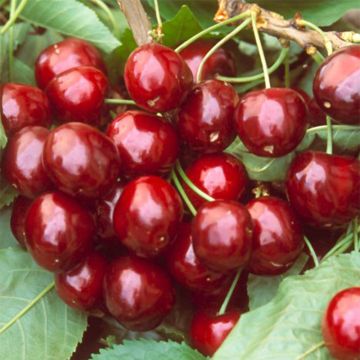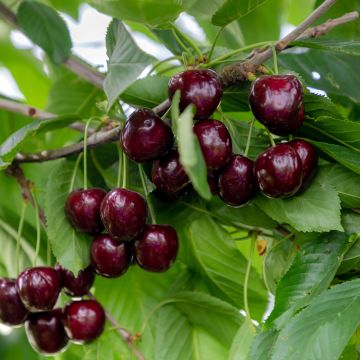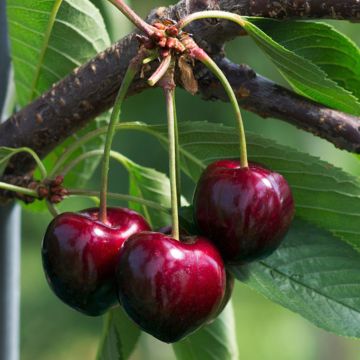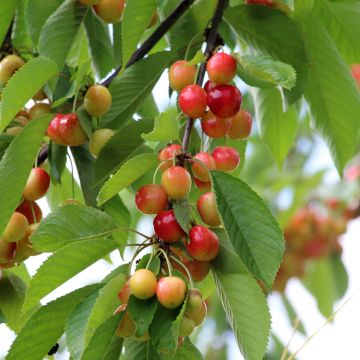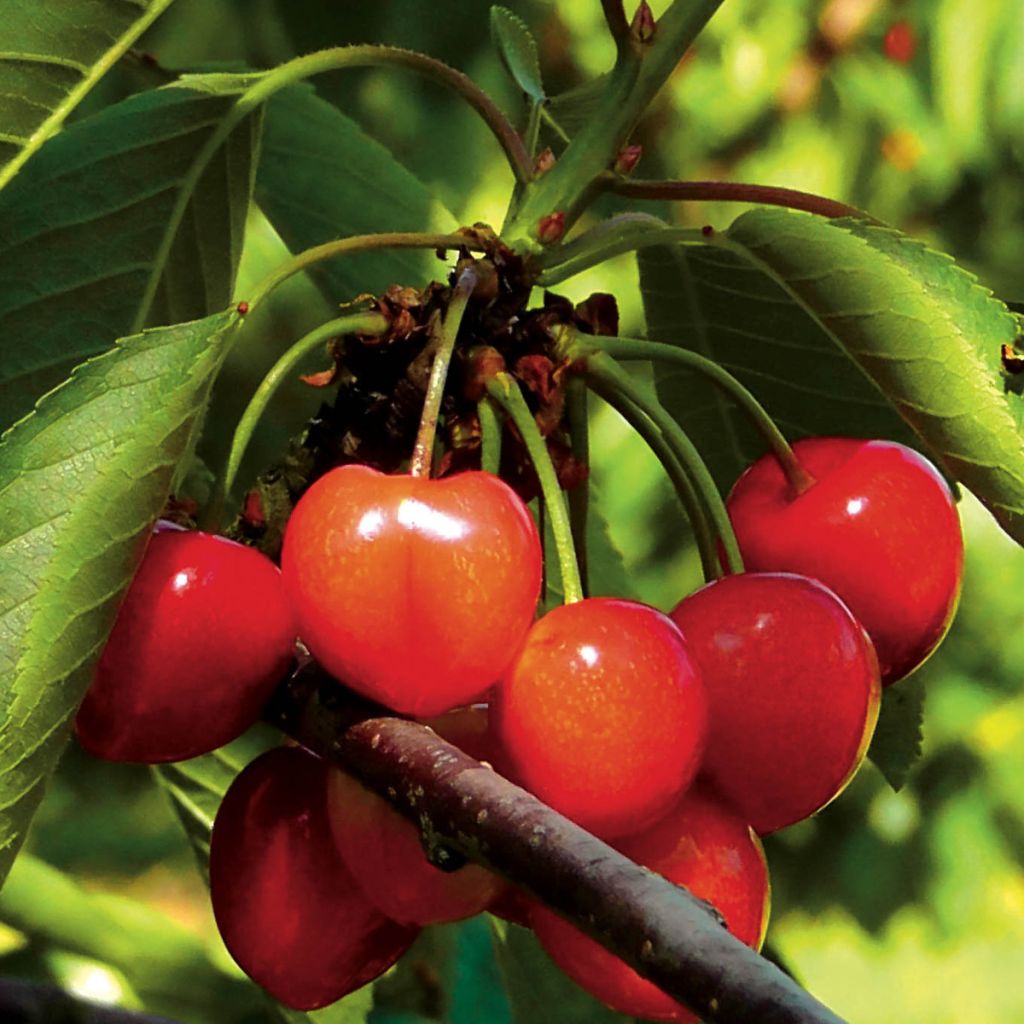

Prunus cerasus Bigarreau Napoléon - Tart Cherry Tree
Prunus cerasus Bigarreau Napoléon - Tart Cherry Tree
Prunus cerasus Bigarreau Napoléon
Sour Cherry, Tart Cherry, Dwarf Cherry, Morello Cherry
First little cherries after planting last November... Good growth, to be continued...
Fabb, 13/05/2025
Special offer!
Receive a €20 voucher for any order over €90 (excluding delivery costs, credit notes, and plastic-free options)!
1- Add your favorite plants to your cart.
2- Once you have reached €90, confirm your order (you can even choose the delivery date!).
3- As soon as your order is shipped, you will receive an email containing your voucher code, valid for 3 months (90 days).
Your voucher is unique and can only be used once, for any order with a minimum value of €20, excluding delivery costs.
Can be combined with other current offers, non-divisible and non-refundable.
Home or relay delivery (depending on size and destination)
Schedule delivery date,
and select date in basket
This plant carries a 6 months recovery warranty
More information
We guarantee the quality of our plants for a full growing cycle, and will replace at our expense any plant that fails to recover under normal climatic and planting conditions.
Description
The Napoleon Sweet Cherry Tree is a vigorous variety that produces fruits with white and juicy flesh, and yellow skin tinged with red. Flowering begins in late March. In order to ensure good fruiting, this self-sterile variety needs to be planted near a Burlat or Van Sweet Cherry Tree, within a radius of 20 to 30m (66 to 98ft). Planting is preferably done in autumn for harvesting from early June.
The Napoleon Sweet Cherry Tree produces heart-shaped fruits with white, juicy, and sweet flesh. The cherries, with yellow skin tinged with red, will attract few birds. Enjoy them right after picking or, if the harvest is abundant, use them to make pies, clafoutis, jams, and preserves. This variety is particularly suitable for processing. Cherries are rich in vitamin C, minerals, and trace elements.
Napoleon is a vigorous variety, originating from Germany. Starting from late March, the Napoleon Sweet Cherry Tree is covered with small white flowers that appear before the leaves. The Napoleon variety is pollinated by the Burlat or Van varieties. It is necessary to have another cherry tree nearby, within a radius of 20 to 30m (66 to 98ft), to ensure good fruiting. The Napoleon Sweet Cherry Tree is also a good pollinator for other varieties. This variety is harvested from early June. The harvest can be more or less abundant depending on the year and may exhibit an alternate (biennial) bearing phenomenon, allowing the tree to replenish its reserves. Fruit production becomes optimal after 6 to 7 years. Cherries should be picked when ripe as they do not ripen after harvest.
The Sweet Cherry Tree (Prunus avium) belongs to the Rosaceae family. It is a medium-sized tree, reaching 5 to 10m (16 to 33ft) in height at maturity. It is hardy and can withstand temperatures as low as -20°C (-4°F), while the flowers are susceptible to spring frosts and are damaged at -2°C (28.4°F). Its rounded habit provides a beautiful shaded space, which is very pleasant during the summer. Its alternate, dentate leaves are shiny and dark green, and then turn a lovely russet colour in autumn before falling. Adapted to most regions, the Cherry Tree can be planted on a lawn, at the back of a flowerbed, or in an orchard.
Report an error about the product description
Prunus cerasus Bigarreau Napoléon - Tart Cherry Tree in pictures
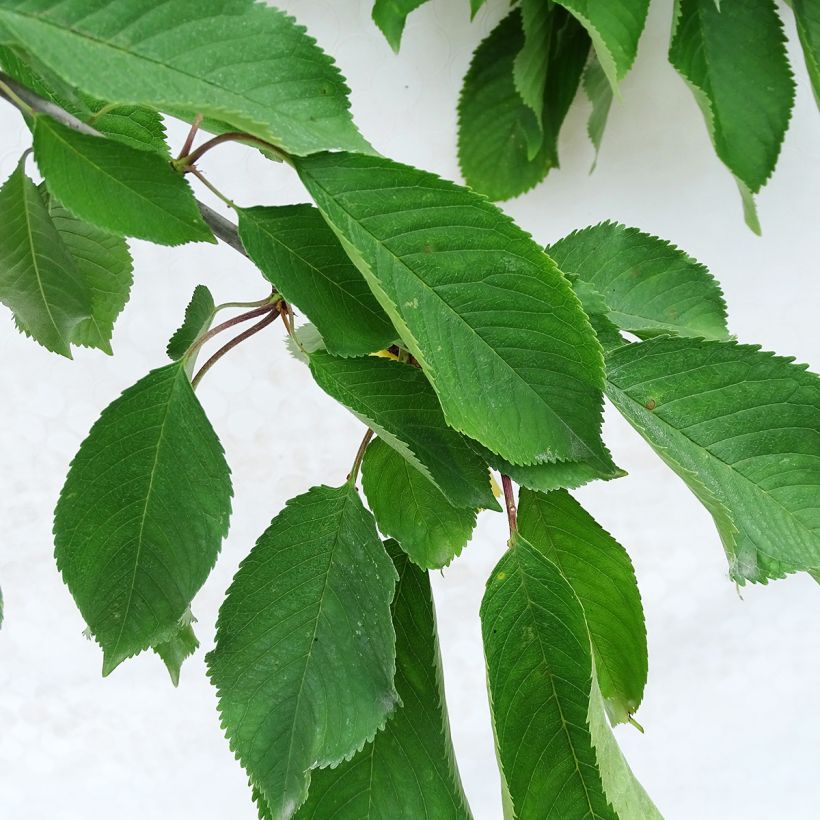

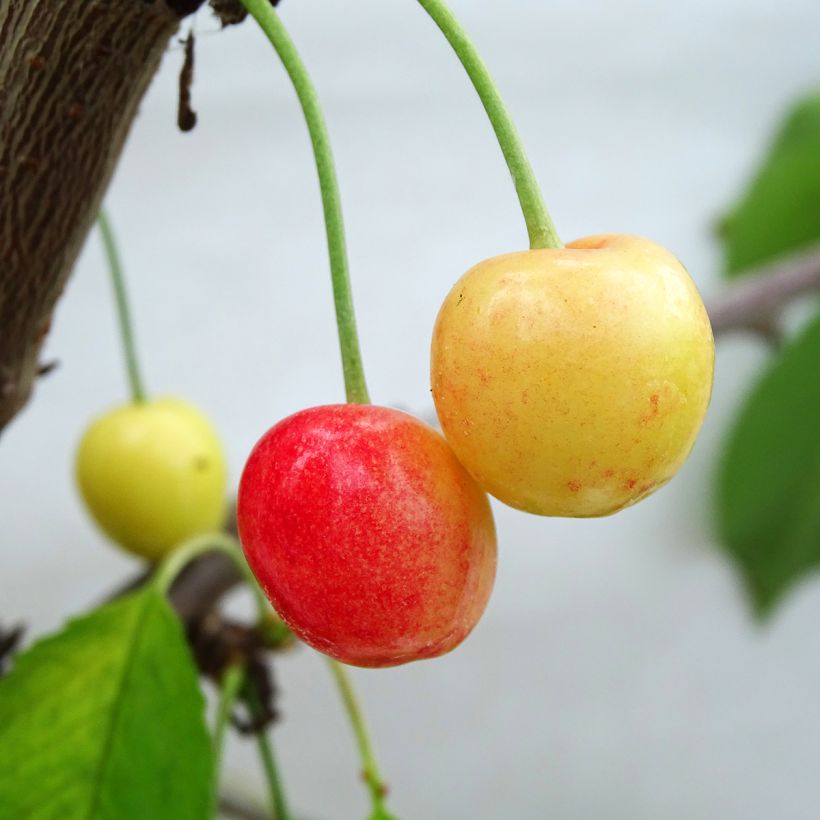

Plant habit
Fruit
Flowering
Foliage
Botanical data
Prunus
cerasus
Bigarreau Napoléon
Rosaceae
Sour Cherry, Tart Cherry, Dwarf Cherry, Morello Cherry
Cultivar or hybrid
Other Cherry trees
View all →Planting and care
Easy to cultivate, cherry trees grow in all types of soil, acidic or alkaline. They appreciate moist, light soils and dislike heavy and clayey soils. Choose a sunny site. In order to limit the risks of late frost to the flowers, it is recommended to plant your cherry tree in a sheltered location, facing west and protected from cold winds in regions that experience spring frosts. Planting is preferably done in autumn. If you plant multiple trees, space them 4 to 5m (13 to 16ft) apart for grafted plants.
Loosen the soil deeply, remove stones and unwanted weeds. Add some sand to improve drainage. Dig a hole 4 to 5 times the volume of the root ball. Make sure to separate the subsoil from the topsoil. Mix crushed horn or well-rotted compost or potting soil with the subsoil and pour this mixture into the bottom of the planting hole. Install a stake. Place the root ball, cover with the topsoil, and firm it down. Water generously (about 10L). Tie the stake to the plant, crossing the tie in a figure-eight shape without touching the trunk.
During cultivation watering is not necessary except in the case of high heat. Mulch at the base to keep it cool in summer. Protect your harvest by installing either a bird net, aluminum foil, or old CDs. In case of aphid attack, spray with soapy water.
Planting period
Intended location
Care
-
, onOrder confirmed
Reply from on Promesse de fleurs
Haven't found what you were looking for?
Hardiness is the lowest winter temperature a plant can endure without suffering serious damage or even dying. However, hardiness is affected by location (a sheltered area, such as a patio), protection (winter cover) and soil type (hardiness is improved by well-drained soil).

Photo Sharing Terms & Conditions
In order to encourage gardeners to interact and share their experiences, Promesse de fleurs offers various media enabling content to be uploaded onto its Site - in particular via the ‘Photo sharing’ module.
The User agrees to refrain from:
- Posting any content that is illegal, prejudicial, insulting, racist, inciteful to hatred, revisionist, contrary to public decency, that infringes on privacy or on the privacy rights of third parties, in particular the publicity rights of persons and goods, intellectual property rights, or the right to privacy.
- Submitting content on behalf of a third party;
- Impersonate the identity of a third party and/or publish any personal information about a third party;
In general, the User undertakes to refrain from any unethical behaviour.
All Content (in particular text, comments, files, images, photos, videos, creative works, etc.), which may be subject to property or intellectual property rights, image or other private rights, shall remain the property of the User, subject to the limited rights granted by the terms of the licence granted by Promesse de fleurs as stated below. Users are at liberty to publish or not to publish such Content on the Site, notably via the ‘Photo Sharing’ facility, and accept that this Content shall be made public and freely accessible, notably on the Internet.
Users further acknowledge, undertake to have ,and guarantee that they hold all necessary rights and permissions to publish such material on the Site, in particular with regard to the legislation in force pertaining to any privacy, property, intellectual property, image, or contractual rights, or rights of any other nature. By publishing such Content on the Site, Users acknowledge accepting full liability as publishers of the Content within the meaning of the law, and grant Promesse de fleurs, free of charge, an inclusive, worldwide licence for the said Content for the entire duration of its publication, including all reproduction, representation, up/downloading, displaying, performing, transmission, and storage rights.
Users also grant permission for their name to be linked to the Content and accept that this link may not always be made available.
By engaging in posting material, Users consent to their Content becoming automatically accessible on the Internet, in particular on other sites and/or blogs and/or web pages of the Promesse de fleurs site, including in particular social pages and the Promesse de fleurs catalogue.
Users may secure the removal of entrusted content free of charge by issuing a simple request via our contact form.
The flowering period indicated on our website applies to countries and regions located in USDA zone 8 (France, the United Kingdom, Ireland, the Netherlands, etc.)
It will vary according to where you live:
- In zones 9 to 10 (Italy, Spain, Greece, etc.), flowering will occur about 2 to 4 weeks earlier.
- In zones 6 to 7 (Germany, Poland, Slovenia, and lower mountainous regions), flowering will be delayed by 2 to 3 weeks.
- In zone 5 (Central Europe, Scandinavia), blooming will be delayed by 3 to 5 weeks.
In temperate climates, pruning of spring-flowering shrubs (forsythia, spireas, etc.) should be done just after flowering.
Pruning of summer-flowering shrubs (Indian Lilac, Perovskia, etc.) can be done in winter or spring.
In cold regions as well as with frost-sensitive plants, avoid pruning too early when severe frosts may still occur.
The planting period indicated on our website applies to countries and regions located in USDA zone 8 (France, United Kingdom, Ireland, Netherlands).
It will vary according to where you live:
- In Mediterranean zones (Marseille, Madrid, Milan, etc.), autumn and winter are the best planting periods.
- In continental zones (Strasbourg, Munich, Vienna, etc.), delay planting by 2 to 3 weeks in spring and bring it forward by 2 to 4 weeks in autumn.
- In mountainous regions (the Alps, Pyrenees, Carpathians, etc.), it is best to plant in late spring (May-June) or late summer (August-September).
The harvesting period indicated on our website applies to countries and regions in USDA zone 8 (France, England, Ireland, the Netherlands).
In colder areas (Scandinavia, Poland, Austria...) fruit and vegetable harvests are likely to be delayed by 3-4 weeks.
In warmer areas (Italy, Spain, Greece, etc.), harvesting will probably take place earlier, depending on weather conditions.
The sowing periods indicated on our website apply to countries and regions within USDA Zone 8 (France, UK, Ireland, Netherlands).
In colder areas (Scandinavia, Poland, Austria...), delay any outdoor sowing by 3-4 weeks, or sow under glass.
In warmer climes (Italy, Spain, Greece, etc.), bring outdoor sowing forward by a few weeks.






























